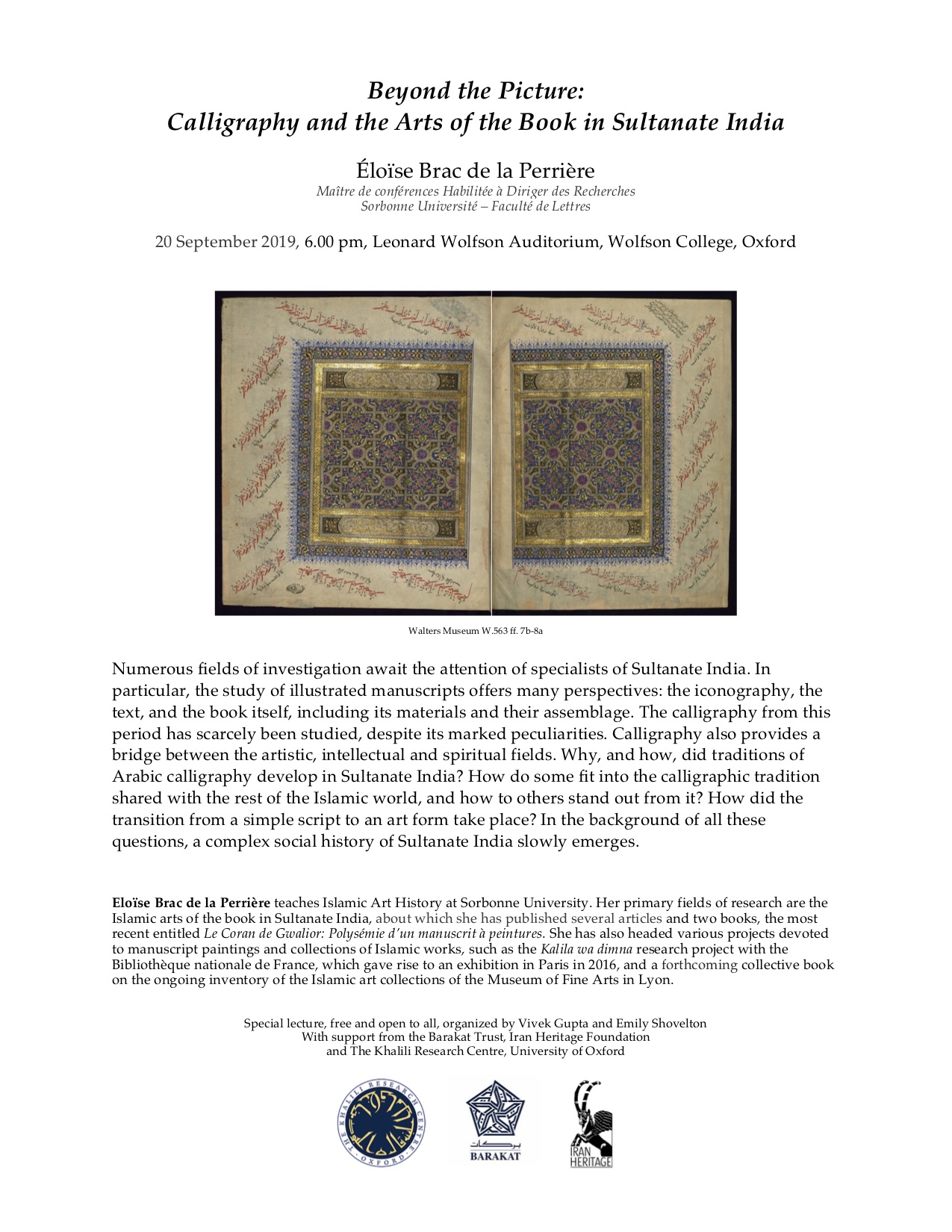Beyond the Picture: Calligraphy and the Arts of the Book in Sultanate India
Éloïse Brac de la Perrière
Maître de conférences Habilitée à Diriger des Recherches
Sorbonne Université – Faculté de Lettres
20 September 2019, 6.00 pm, Leonard Wolfson Auditorium, Wolfson College, Oxford
Numerous fields of investigation await the attention of specialists of Sultanate India. In particular, the study of illustrated manuscripts offers many perspectives: the iconography, the text, and the book itself, including its materials and their assemblage. The calligraphy from this period has scarcely been studied, despite its marked peculiarities. Calligraphy also provides a bridge between the artistic, intellectual and spiritual fields. Why, and how, did traditions of Arabic calligraphy develop in Sultanate India? How do some fit into the calligraphic tradition shared with the rest of the Islamic world, and how to others stand out from it? How did the transition from a simple script to an art form take place? In the background of all these questions, a complex social history of Sultanate India slowly emerges.
Eloïse Brac de la Perrière teaches Islamic Art History at Sorbonne University. Her primary fields of research are the Islamic arts of the book in Sultanate India, about which she has published several articles and two books, the most recent entitled Le Coran de Gwalior: Polysémie d’un manuscrit à peintures. She has also headed various projects devoted to manuscript paintings and collections of Islamic works, such as the Kalila wa dimna research project with the Bibliothèque nationale de France, which gave rise to an exhibition in Paris in 2016, and a forthcoming collective book on the ongoing inventory of the Islamic art collections of the Museum of Fine Arts in Lyon.
Special lecture, free and open to all, organized by Vivek Gupta and Emily Shovelton
Hosted by the Khalili Research Centre, University of Oxford
With support from the Iran Heritage Foundation and Barakat Trust


